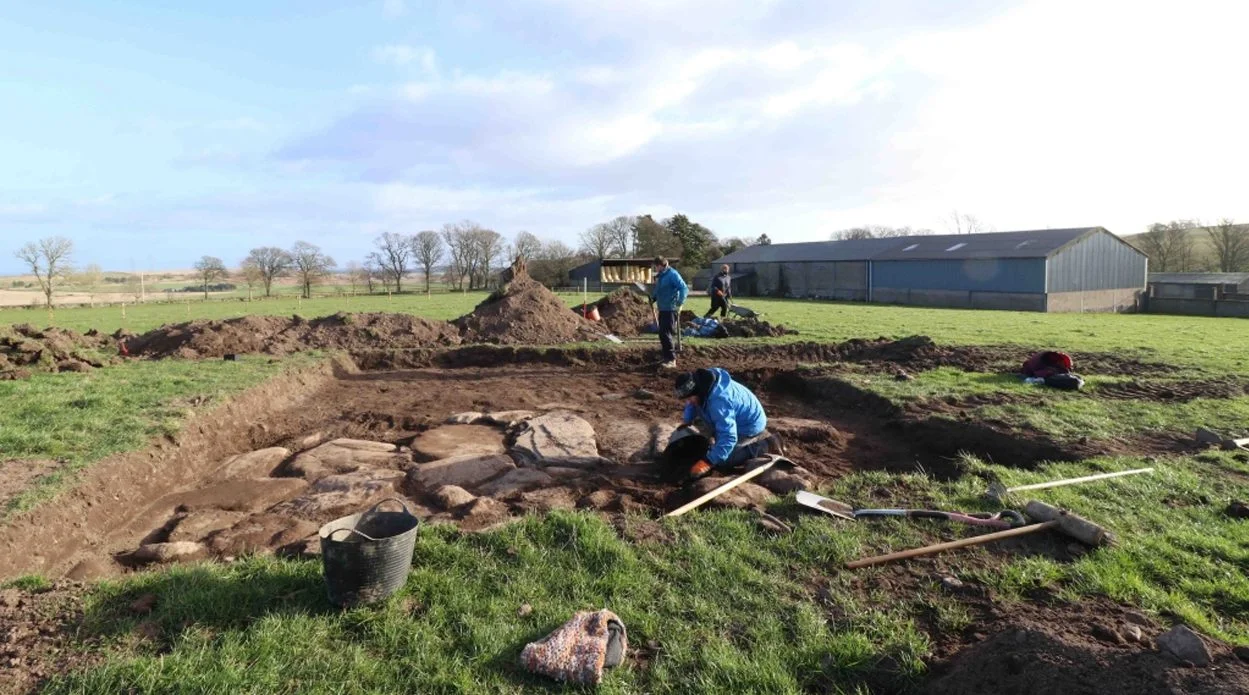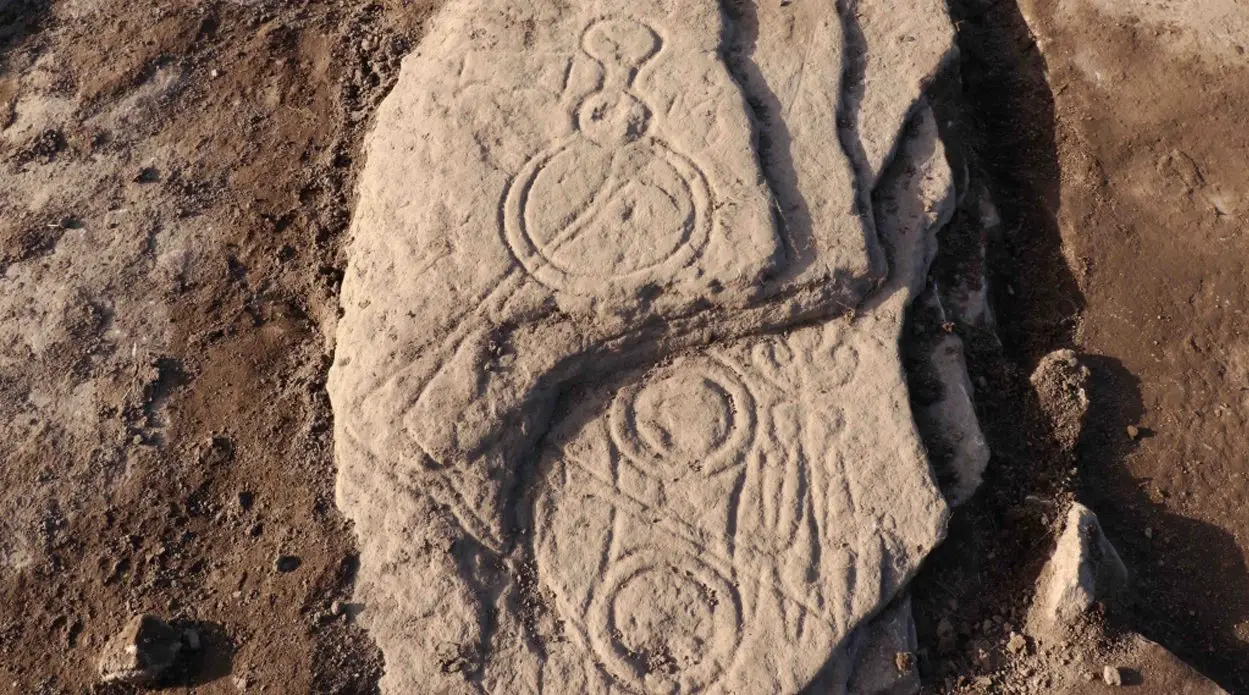Archaeologists have uncovered a stone with carved Pictish symbols in a farmer’s field near Forfar, Scotland.
A team from the University of Aberdeen was conducting geophysical surveys to better understand the landscape of the Aberlemno stones, where they found anomalies that led to the discovery of the 1.7-metre-long stone.
The Aberlemno stones are a series of five Class I and II Early Medieval standing stones found in and around the village of Aberlemno that depicts carved crosses with Celtic patterns, Pictish symbols, and one particular famous stone with battle scenes showing human figures bearing weapons and riding horses.
The study is part of the Leverhulme Trust funded Comparative Kingship project, in which the team dug a small test pit to try and establish whether the anomalies were part of a building or settlement, but to their surprise they found a stone carved with Pictish symbols that dates to around the fifth or sixth century AD.

The stone was built into the paving of a building from the 11th or 12th century AD, in which the paving included the Pictish stone and examples of Bronze Age rock art that appears to be built directly on top of settlement layers extending back to the Pictish period.
Professor Gordon Noble who leads the project said: “There are only around 200 of these monuments known. They are occasionally dug up by farmers ploughing fields or during the course of road building, but by the time we get to analyse them much of what surrounds them has already been disturbed. The benefits of making a find in this way means that we can do much more detailed work in regard to the context. We can examine and date the layers underneath it and extract much more detailed information without losing vital evidence.”
“The discovery of this new Pictish symbol stone and evidence that this site was occupied over such a long period will offer new insights into this significant period in the history of Scotland as well as helping us to better understand how and why this part of Angus became a key Pictish landscape and latterly an integral part of the kingdoms of Alba and Scotland.” Added Professor Noble.
Header Image Credit : University of Aberdeen





